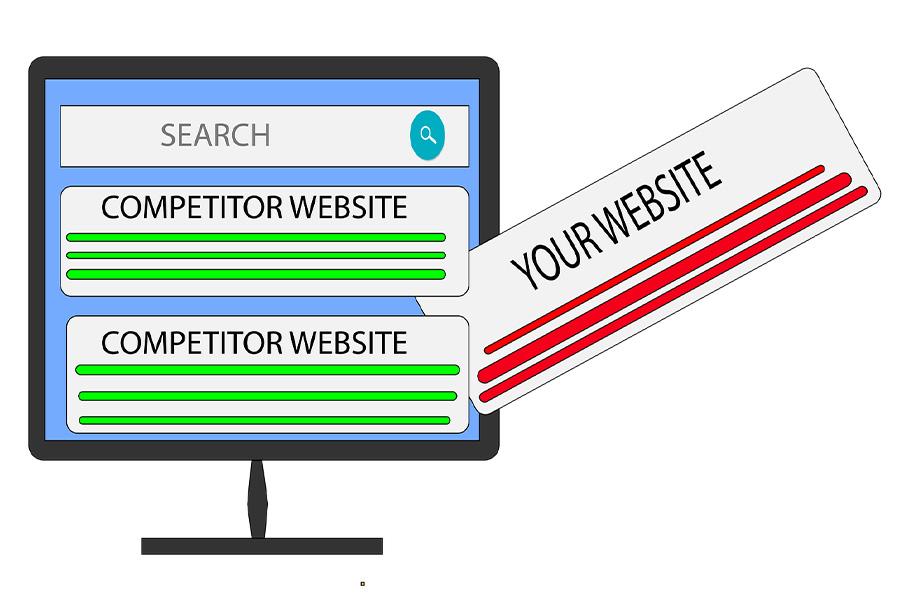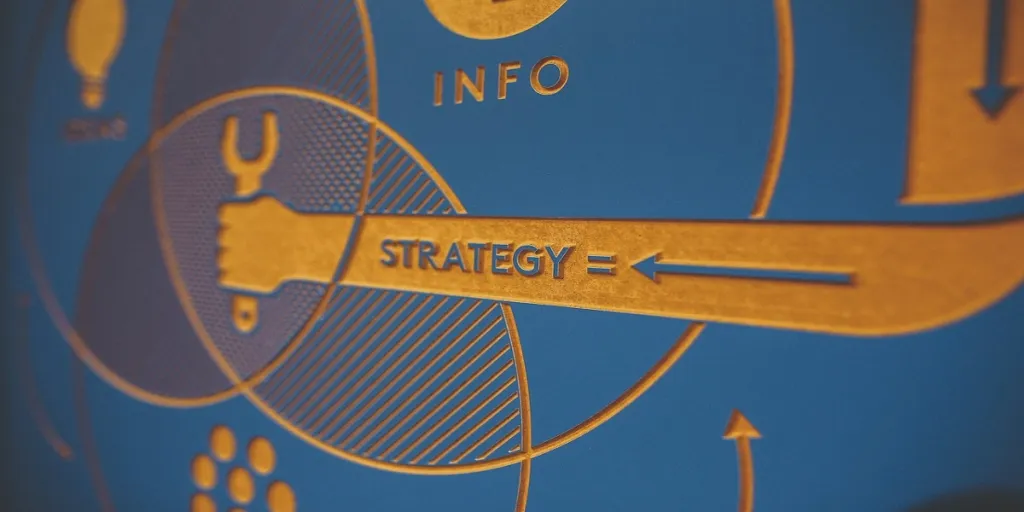Businesses can employ a range of marketing techniques, from intensive social media campaigns to inbound marketing to increase sales. While most of these strategies offer many benefits, a go-to-market (GTM) strategy is particularly useful as it is tailored specifically at bringing a new product to the limelight. So read on for a breakdown of what a GTM strategy is, and for how it can be used to give your new products the reach they deserve.
Table of Contents
What is a go-to-market strategy?
The GTM approach vs. a general marketing strategy
Key steps to crafting a successful GTM marketing strategy
Get the best out of a GTM strategy.
What is a go-to-market strategy?
GTM is an organizational plan to define customers, identify and utilize outside resources such as sales teams, and to identify tactics such as pricing to offer a unique value proposition to create the demand for a new product. In simple terms, it’s a marketing strategy to introduce a new product to customers: one that helps you launch your product to the right audience, with the right messaging, at the right time.
GTM offers product-led GTM (PLG) or sales-led GTM (SLG) strategies to aim for steady, sustainable, and measurable growth.
Product-led strategy
OpenView Venture Partners is credited for inventing PLG, although marketers have been unknowingly using it for some time. Ideally, PLG focuses on acquiring and keeping customers through a measurable and repetitive process by channeling more efforts into building a superior product whose value will increase demand.
Focusing on how customers interact with a product in the early stages is crucial to helping a company redesign features that match consumer problems.
Sales-led GTM
When exploring new opportunities, a company needs to have a sustainable sales pipeline. A refined sales-led GTM approach will ensure marketing evangelists gather, pursue and convert leads into revenue. But in each stage, teams will initiate communication and fuel the conversation while echoing out positive aspects of the products and important branding information. As a consequence, the success of a sales-ledgo to market plan will be owed to the marketing department.
The GTM approach vs. a general marketing strategy
A marketing strategy is a company’s comprehensive game plan to understand the needs of customers and create demand for its products. It covers everything from brand messages to customer intel. However, it differs from GTM in the following ways.
- A marketing strategy considers all products and the company’s reputation, while GTM focuses on new products. Once the demand for the new product sets in, GTM leverages control to the marketing strategy.
- Marketing strategy is a company’s long-term approach to ensure customers appreciate the brand’s value, while GTM has short-term objectives of increasing a product’s demand.
- The entire marketing force focuses on a marketing strategy while a small dedicated team trained on the new product will be entrusted with GTM’s success.
- Marketing strategy requires insightful ideas and an established communication system so that all stakeholders can understand the story behind a company. In contrast, GTM strategists follow a narrower approach to developing messages that will voice out a product’s benefit to the right audience.
Key steps to crafting a successful GTM marketing strategy
1. Identify the market
Any successful GTM strategy should, above all, prioritize the market which hosts customers. Here, a business will define customers based on personas. Personas are fictional representations of actual buyers based on their behaviors. Deep research in personas shows how customers perceive certain products and how they satisfy them.
In this stage, marketers will define;
Decision-making factors: who makes the decision to help customers buy a product? Are there soul decision makers like sales and marketing managers in the company? What makes customers buy a product? Are they psychological reasons, socio-economic problems, or cultural issues?
Pain points: Do your audience have a specific problem that you intend to solve? Is the buying process of the current goods complicated? How about the quality? Will it meet the current wishes and worries of customers?
Industry: which industries are they targeting? For example, a new vaccine will target the healthcare industry whose customers are doctors and clinics.
Geographical location: which continent or country do ideal customers come from? For instance, a new premium product targeting rich people will focus on developed countries.
Budget: Know how much customers are willing to spend on a product and come up with a pricing strategy. Going over the market’s limits without considering better features and consumer alternatives will slow down the demand.
Media type: Is the marketing team conversant with ways prospective customers use to obtain information? Do they use online or printed media? How much time do they spend on media acquiring information and entertaining? These questions will help understand which ways to engage customers with.
2. Define competitors

Competition is one of the leading causes of GTM failures. It comes as direct, indirect, or replacement. Indirect and direct competitions pose the greatest threat because they are vying for the same market niche, making it difficult for a new product to penetrate through. To prevent that, do competitive research.
Competitive research analyzes all competitors using market studies to identify their strongholds and weaknesses compared to your strategy. Findings will provide answers to:
- Who else has similar products?
- How do you identify regions flooded with competitors?
- Is the market saturated?
- What unique preposition do competitors offer to attract more customers?
3. Communicate the value of the products to consumers
A product’s value is a unique mix of benefits that a company promises to deliver in a way that competitors will not. In a nutshell, a value proposition gives a product meaning and measurable benefits. Thus, find appropriate ways to pass the information over to buyers.
Businesses communicate value propositions at entry points, homepages, store outlets, packages, and ads. But be clear, compelling, and concise by targeting current problems before consumers lose interest in the information.
Example: Microsoft has positioned itself at the center of the technological world by not only providing solutions to gamers through Xbox but also selling easy-to-use computer operating systems. But at the heart of it is Microsoft Office, a comprehensive package to keep your office work moving.
On the homepage, Microsoft doesn’t market individual features of Office but allows you to unlock an integrated ecosystem of solutions that almost all offices need. As it markets, MS uses words like “collaborate” and “share” and encourages users to select their favorable app. It has even grouped apps into categories such as for homes, educators, and organization. This makes it as easy as possible for users to find what they are looking for.
Lastly, the company emphasizes security, confidence, and protection of loved ones to reassure users as they continue exploring the products on offer.
4. Define your pricing strategy.
While selling a product at a high price may reduce demand, it still has some benefits. Buyers will start viewing your product as of the highest quality, and you can plunge directly into the luxury goods industry just like world-renowned companies such as Nike. Nike started simple but used their business strategy to position themselves as an expensive brand.
Similarly, pricing one’s products too low may lead to lower profitability and early discontinuation. But, the strategy can quickly fuel the demand and increase the overall profit margin. A good example is Coca-Cola which distributes drinks at low prices but enjoys worldwide attention.
How exactly should you price? Consider:
- Cost of production
- Competitor’s pricing strategies
- How many units should you sell at what price to break even?
5. Map the buyer’s journey

While personas are entrances to a buyer’s mindset, putting on their shoes and following in their footsteps throughout the buying journey provide insights into how they solve different problems. This information allows companies to improve consumer experience and increase conversion rates.
Start by stating clear objectives, profile targeted personas, list all touch points, and map out how you can increase customer and brand interactions. Touch points include websites and brick-and-mortar stores where buyers interact with the brand.
Visually, the buyers’ journey is represented as a funnel divided into three sections.
- Top of the funnel (TOFU)
These marketing activities target large population strata to create awareness and educate prospects. Measuring TOFU provides critical information on the general public’s behavior towards a brand.
For starters, use influencers, SEO, buyer-centric blogs, and promotional ads to trigger public interest.
- Middle of the funnel (MOFU)
As the funnel narrows down, a business starts receiving responses and inquiries from interested parties. At this point, nurture leads, nudge purchase intentions, and forge emotional bonds using testimonials, product reviews, happy customer videos, and in-depth comparisons of your product against the competition.
- Bottom of the funnel (BOFU)
BOFU has highly qualified leads pointing to clients who are about to exchange their money for goods. Push them through the funnel with highly optimized and solution-focused information. Furthermore, validate their purchases through motivation to strike long-term relationships.
6. Design marketing channel
A marketing channel is a series of activities involving people, offers, and organizations seeking to change goods ownership from a business to consumers. Today, companies use dual marketing channels mixing both social media platforms and traditional interactions to reach out to people at multiple points.
A marketing channel should identify the acquisition channels, the number of customers one is aiming for, and the cost of managing the channel.
- Identifying acquisition channel
Among many channels, choose one that is likely to have the highest return on investment, is mostly used by your prospects, and is easy to manage based on your team’s knowledge.
And how do you determine that? Rate the channel using confidence level. You can do this by asking the following questions:
- How confident are you that the selected channel will have the highest customer conversion rate?
- How confident are you that you will spend budgeted resources on the channel without going overboard?
Practically, these channels include:
SEO: this increases your visibility online and educates customers on how to choose better products. It is excellent at slowly introducing a new product. However, it takes between 6 and 12 months of a modest investment in terms of high quality content to receive organic traffic.
Paid advertisements: using both online ads such as social media ads and offline ads such as banners and TV ads, paid advertisement is a click-to-play strategy which 79% of marketers say is hugely fruitful.The method is very expensive nonetheless. For example, if you cast several ads and spend $4 per click, with a conversion rate of 1%, you will spend almost $400 per new customer, that is, 4 x 0.01(1%).
Press: a few minutes in front of cameras may be a great way to launch a new product. It improves people’s trust in your brand and ascertains your position. Press is effective when breaking a milestone, such as forming new partners or launching a new product.
Email marketing: This is one of the acquisition channels with the highest ROI cashing on average $36 per $1 spend. This is because marketing messages are easily accessible since they share the same inbox where customers receive personal updates from friends and family. Coupled with ease of automation, email marketing is an excellent channel for new products. However, on its own, email marketing will stagnate without encouraging sharing. Also, you need to source hundreds of thousands of email addresses to launch the campaign.
- The number of customers you are targeting
In the early stages, you only need to focus on a few customers that bring in the highest value and compare how much you spend on them using the ratio between lifetime value (LTV) and cost of acquiring a customer (CAC). A healthy business has an LTV to CAC ratio of between 3:1 and 5:1.
Assuming you spend $300 on acquiring customers from Facebook, whose suggested LTV is $200, and you are using a modest LTV: CAC of 4:1, the CAC will be (4×300) =$1200. So you will need 6 customers, that is CAC/LTV to break even.
So, to determine if the marketing channel is worth expanding, track the number of customers with respect to CAC and LTV. If the CAC is high while LTV is low, you need many customers. Likewise, if the CAC is low while LTV is high, a few customers are worth pushing the strategy to the next level.
7. Come up with sales strategies and distribution networks

After the awareness stage, growing interest will spark purchases and better be ready with distribution networks which are basically selling points that use direct channels (business to customers) and indirect channels (using intermediaries).
But for the chosen network to work, you need a sales strategy.
- Self-service
This is a customer’s free will to purchase goods directly from a company or distributor. It works better on e-commerce platforms and for conveniently located stores. But while self-service requires less investment in marketing teams, it’s still important to boost a website’s traffic through keyword research, guest posts, backlinks, and SEO to attract more visitors. Additionally, for storefront businesses, one can place products at strategic locations where consumers will access them.
- Inside sales
Inside sales involve teams scouting out and convincing prospective customers to try out a product. The method is suitable for customers ready to buy slightly expensive and generally more specialized products like machinery and software.
Representatives may have a field office and reach out through cold calls, emails, or social media. Responders will be shown models before sales teams offer them to a presentation.
- Field sales
Field sales entail handpicking a few leads facing a certain problem, such as an organization without an online accounting system, and presenting to them a solution. The method is tiresome. It involves mostly B2B transactions where the solution is expensive and requires several meetings.
- Channel model
Here, vendors outsource third parties to set up distribution networks for the company, in a partnership deed, or as separate businesses.
To boost sales, businesses partner with companies with complementing services. For example, a perfume manufacturer and cosmetics store.
However, with limited control over the channel, a business has little to no say on the final customer, and it is clear the model favors mostly large scale manufacturers.
8. Set and measure goals
The main goal of a GTM strategy is to have a blueprint on how to introduce a new product while considering all possible factors. Along the way, a business will want to reduce costs, maximize profits, reinforce its competitive position, and encroach on competitors’ market niches.
Based on the value matrix, keep in mind goals change depending on a product’s acceptance stage, the general economy, and the seasons. But it’s a good idea to measure goals using metrics such as conversion rates, the time between first contact and making a purchase, and sales volume periodically.
As the results come out, the analyzed data will aid in finding ways of improving GTM’s outcomes, lowering acquisition costs, and shortening sales cycles.
9. Have an execution strategy
Since a strategy is a list of ideas required to achieve a certain goal, sales won’t be made without a clear execution process. Execute a GTM strategy by:
- Sharing it with key parties and coordinating responses to a central place
- Auto-connecting goals with day-to-day activities, sharing updates, and analyzing and correcting mishaps
- Standardizing work to avoid duplicates and clarify messages.
Get the best out of a GTM strategy
A go-to-market is a strategy to introduce a new product to specific consumers after defining their needs and understanding competitors. It differs from a market strategy by the fact that it is a short-term strategy that employs a few specially trained members of a marketing team.
To come up with a working GTM strategy, identify the market, define your competitors, know your value, and map customers’ journey. As you finalize, have concrete goals and plan how to execute the strategy. To revolutionize your business, combine a GTM strategy with these eight retailing techniques.





Great piece.
Kindly be sending to my email directly.
Regards
Emmanuel Ngonga